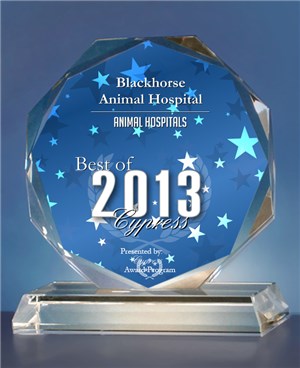Library
-
This handout discusses arthroscopy, the insertion of a telescope-like camera into a joint. The joints commonly examined and treated using this technique, along with the benefits and risks of this procedure, are outlined.
-
Neutering in Cats
Son los términos comunes para describir la técnica quirúrgica conocida científicamente como orquidectomía y orquiectomia. En estas técnicas, se extirpan los dos testículos con el objetivo de esterilizar al macho.
-
Giving Pills to Cats
Administrar un comprimido a un gato puede ser extremadamente difícil …¡incluso para los veterinarios más experimentados! La manera más fácil es escondiendo la pastilla dentro de la comida. Normalmente, funciona mejor si la comida que se usa es muy gustosa para el gato, como atún, salmón, yogur o crema de queso.
-
Elizabethan Collars in Cats
Un collar isabelino (también conocido cómo campana) es un capuchón o cono de plástico que ayudará a proteger las lesiones y heridas de su gato de más daños. Estos collares previenen que el gato se lame o muerda las lesiones del resto de cuerpo, o se rasque con sus patas las zonas de la cara y cabeza.
-
New medications can help regulate blood glucose levels in cats, including once-daily oral medications bexagliflozin (Bexacat) and velagliflozin (Senvelgo). Cats in the initial stages of DM may benefit most from oral diabetes treatments. This article discusses how these medications work, potential risks, and monitoring required.
-
Diarrhea in Cats
La diarrea ocurre cuando el gato elimina heces no formadas o heces líquidas. Generalmente se acompaña de un aumento del volumen de las heces y de la frecuencia de defecaciones. Esto ocurre porque por algún motivo se aumenta la velocidad en la que las heces pasan por los intestinos y se reduce la absorción de agua, nutrientes y electrolitos. La diarrea no es una enfermedad, es un síntoma que suele acompañar a diferentes enfermedades.
-
Exercise restriction refers to the act of intentionally limiting a pet’s physical activity. Veterinarians often recommend exercise restriction to allow a pet to heal after a surgical procedure or injury, although it may also be recommended to prevent worsening of a medical condition. Your veterinarian’s guidance is essential when implementing exercise restriction.
-
Proprioception is the ability to know where your body is in space. This is what helps reduce falls and injury. Proprioception may be lost suddenly through spinal cord trauma, or it may be reduced with age, joint disease (osteoarthritis), or other orthopedic or neurologic disease. Some specific controlled exercises that can improve proprioception are discussed. Any exercise plan needs to be formulated by a veterinary rehabilitation therapist to avoid injury.
-
Controlled, regular physical exercise is one of the core treatments of canine osteoarthritis, along with weight control, physical rehabilitation, and pain management. Exercise increases circulation to the muscles and joints, decreases stiffness in the joint capsule and soft tissues, reduces pain, maintains strength, and benefits the cardiovascular system. Left untreated, the chronic pain of arthritis causes a continually worsening cycle of less movement, weight gain, muscle loss, decreased strength, and loss of cardiovascular fitness.
-
Obesity occurs when a cat consumes more calories than they expend. Therefore, managing obesity in cats often requires both dietary changes and increased exercise/activity. There are several methods for increasing activity in cats, including play, using cat trees and climbing structures, outdoor enclosures, and intentional, active feeding practices. Each of these can be beneficial in promoting weight loss.



